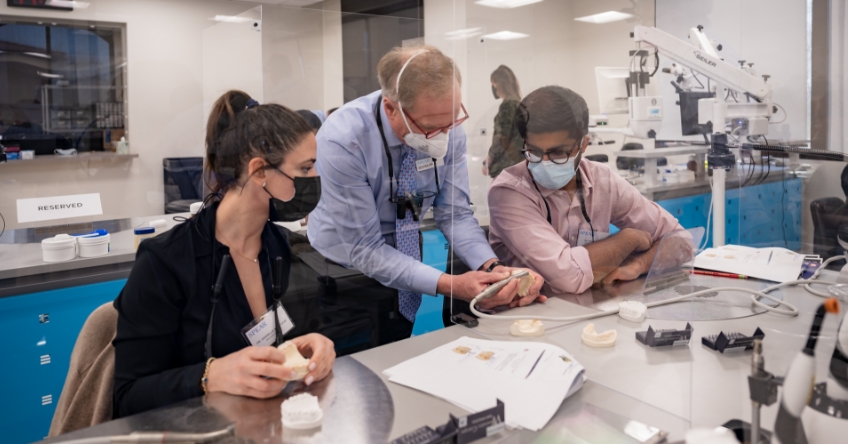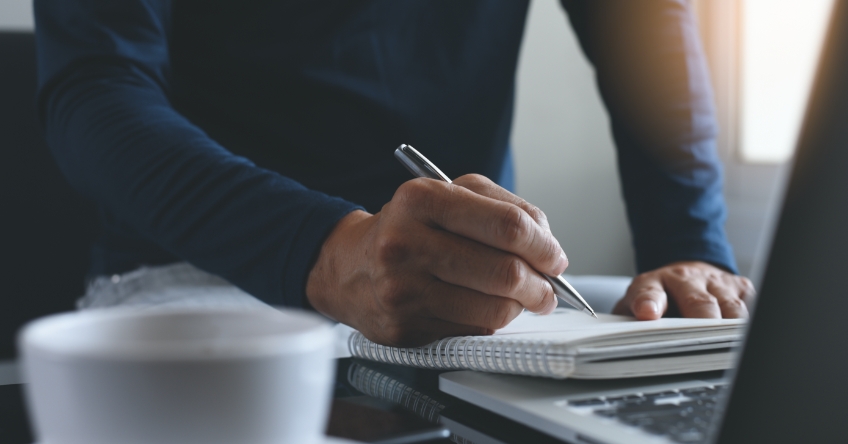Learning “Superfood” – How One Question Makes Campus Learning Stick
By Jeffrey Bonk on October 18, 2021 | comments
Another 3-day workshop finished, and I am on my flight back home to Chicago. Our hands-on Restorative Design workshop on Spear campus provides a wealth of information and techniques around preparing teeth for indirect ceramic restorations.
Like many Spear courses and workshops, the amount of information received is akin to 'drinking from a fire hose'—it's challenging to grasp the breadth of information and begin to put it to use in practice. So many concepts, techniques, processes and instrumentation to organize and implement into day-to-day practice. It all can be overwhelming, to say the least.
I know your situation—I've been there. As I worked my way through the curriculum in my early days at Spear Education, I attended many seminars and workshops.
In the early years of attending courses out-of-state, my mind would be reeling as I boarded the plane to go home. As a practice, I would get out my workbook and review my notes from the previous program.
As I sifted through the content, I would make note of concepts that were the “aha” moments and attempted to organize the material into lists. The lists would be categorized into:
- Must do immediately
- Need to get to sooner than later
- Will have to wait for now
All this organizing was an attempt to synthesize the information and try not to forget everything I had learned on campus. And for the most part, it worked well. I did manage to incorporate many of the concepts and teachings from Spear curriculum into my everyday practice, and I shared much of it with my team. Even today, I continue to implement new learning and procedures into my daily work.
As resident faculty, I continue to learn and grow from my involvement in the workshops, as participants push me by posing questions and invitations to dive deep and provide guidance and understanding. I am fulfilled and grateful to be in this position of guide and mentor.
In this way, my plane ride home has changed very little from my early years as a “student” at Spear. I now have greater understanding and insight into the concepts and techniques presented in the workshops—and although I no longer make “to-do” lists of procedures and processes to implement in practice, I do spend my flight thinking about and reflecting on the workshop, the participants and how could I improve my teaching and guidance.
I think about the highlights and the “aha” moments. I also think about the challenges and frustrations that were experienced by participants. I contemplate how could we change things to improve the learning and make the course better. My present lists are about exercises, concepts, and techniques that could expand and enlighten the minds and experiences of the attendees.

One key question for retaining knowledge
Along with penning my thoughts and inscriptions from the course while on my plane home, I usually read a book that deals with teaching, mentoring, guiding, or leading others. This month while reflecting on my experience teaching Restorative Design, I chose to read The Coaching Habit: Say Less, Ask More & Change the Way You Lead Forever, by Michael Bungay Stainer.
This book—which was recommended to me by Spear visiting faculty member Dr. Mac McDonald — emphasizes leading by asking questions versus giving advice. One of the questions highlighted in this book deals directly with the conversation about making lists and attempting to organize and prioritize learning from workshops.
Science has told us repeatedly that we all have a low retention rate for knowledge. In a nutshell, we tend to forget more than we retain. This is especially true the longer the timeframe between initially learning the material and when we're able to begin applying it.
In their book, Make it Stick: The Science of Successful Learning, researchers Peter Brown, Henry Roediger, and Mark McDaniel emphasize the need to harness information retrieval—or as they phrase it, that it's “essential to interrupt the process of forgetting.” Their research says that if learners ask questions about their own learning, learners can create an interruption in the slide toward forgetfulness.
The Coaching Habit author Michael Bungay Stainer further highlights the value of a single, pivotal question in the interests of retaining information. In fact, he says that this single question is like a “superfood” as it relates to information ownership and acquisition.
Instead of asking yourself what you learned or what you want to remember, try asking yourself this –
“What was most useful for you?”
According to Bungay Stainer, this question is the most powerful question you can ask to retain information because of six key factors:
- It assumes the conversation/material was useful. It frames the moment or situation or material as something that is important and useful. The question requires us to identify what aspect was useful and to highlight that facet. This question is an attempt at distilling all the material and concepts presented to one useful and pragmatic idea.
- It requires you to identify “the big thing” that was most useful. Like distilling information down into a single idea, Michael Stainer also discusses One Big Thing (OBT) — defining or delineating the one thing that is worth remembering or acting upon. This is the “key takeaway” from the course, workshop or learning moment.
- It makes learning personal. Adding “for you” takes the learning from abstract to personal, objective to subjective. Only you can determine what was impactful or meaningful. As much as the teacher, your classmates or your team talk about what is or was important, it all comes down to you.
- It provides feedback. Asking the question of what was most useful to you sets up a kind of “feedback loop.” To answer the question, you must think of the many different concepts presented and carefully analyze each to decide on which information is most applicable—thus, interrupting the “slide toward forgetfulness.”
- It invites more learning. The process of reviewing the material with a frame of mind focused on utility is a learning process. Posing this “most useful” question in the forefront of your mind as you review new material helps to categorize the information. By going through this process, you extract the most value and avoid forgetting.
- It embeds learning. Taking and making the time to extract what is most useful to you is a critical step toward improving your outcomes, skills and knowledge. There's plenty of information shared during workshops and courses—asking the question of “was it useful?” does not provide the bedrock learning experience of turning the question more inward.
Asking yourself, “What was most useful to you?” provides a clear and definitive direction that aides in integrating and implementing tools, processes, and techniques into practice.
As I reflect upon my experience as a student at Spear Education, it was not as focused and directed as it could have been. My team and I endured lots of trial and error, frustration, and many dead ends trying to integrate and implement new concepts into practice.
I believe that by applying the question of “What is most useful to you?” and identifying one or two important concepts, that executing new tools and techniques into practice will become more manageable, less stressful, and more successful.
Jeffrey Bonk, D.D.S., is a member of Spear Resident Faculty.